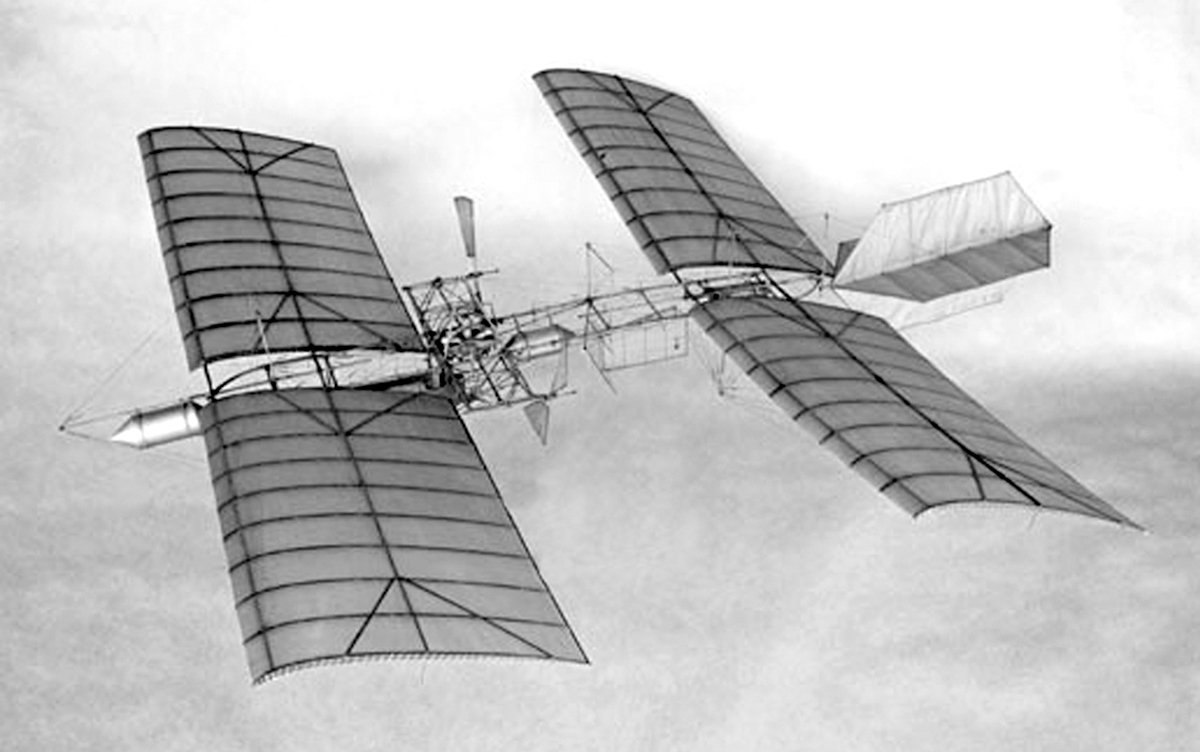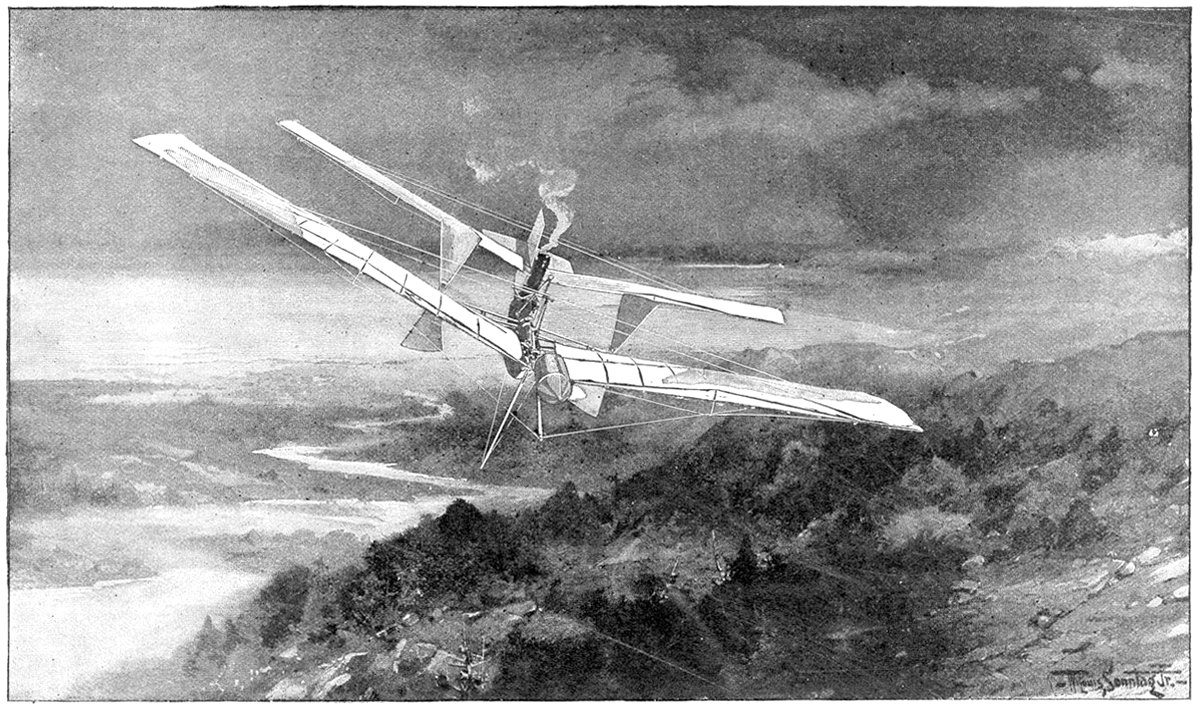Samuel Langley’s Aerodrome
Photo of a model of Samuel Langley’s Aerodrome No. 5, designed in 1901.
Samuel Langley was an astronomer and physicist who was the third secretary of the Smithsonian Institution. He was also a pioneer of aviation, most famous for his Aerodrome designs, which he built and tested from 1894 to 1903. Pictured above is a photo of his Aerodrome #5, which was a pilot-less model that had success flying. Langley was unable to repeat this success with larger, piloted designs, however.
Langley began experimenting with flight in 1886 with small, rubber-band powered gliders. He found success with these models, and on 6 May 1896 his Aerodrome #5 model made two successful flights over the Potomac River near Quantico, Virginia. The aircraft were launched from atop a houseboat with a catapult launching system. This allowed Langley to test his prototypes in calm weather rather than relying on windy conditions. The flights were 700 meters (2,300 feet) and 1,000 meters (3,300 feet) in length, which was ten times longer than any previous heavier-than-air flying machine had successfully flew. Pictured above, the design featured two pairs of wings, with one pair at the front and one pair at the rear. It was steam-powered and weighed only 11 kg (25 lbs).
Two drawings on the Langley Aerodrome #6, showing it in mid-flight from below and above. Originally published in The Strand Magzine in 1897.[1]
After this initial success, Langley’s tests drew the attention of Assistant Secretary of the Navy Theodore Roosevelt, and the Smithsonian was awarded a $50,000 grant to further develop a piloted version the design. In the meantime, Langley built a gasoline-powered model at one-fourth scale, which flew successfully on 18 June 1901. A second version with an improved engine again flew on 8 August 1903. These tests gave Langley and his team the knowledge they needed to build a full-scale prototype.
Photo of a failed flight attempt of Samuel Langley’s manned Aerodrome from 7 October 1903. The machine was twice catapulted from a houseboat on the Potomac River, and failed to fly each time.
A full-scale prototype was built in 1903 with a 53 horsepower internal combustion engine, which was four times the power of the Wright Brothers’ engine. While this Aerodrome excelled in power, it lacked in controls, however. It provided pitch and yaw control through a Pénaud tail, but had no roll control and no landing gear. Despite this, Langley made two test flights with his chief engineer Charles M. Manly acting as pilot. The first attempt was on 7 October and the second was on 8 December 1903. Each time the machine collapsed and fell shortly after being catapulted, with Manly escaping unhurt. Langley blamed the launch mechanism for the failures rather than the machine itself, and he made no further test flights with the Aerodrome.
In the end, Langley underestimated the stress caused by the catapult mechanism on the Aerodrome, which most likely caused it to collapse. Even if it did fly though, the lack of a proper control system would’ve put Manly in constant danger of a crash landing, so it was fortunate that he escaped both test flights unharmed. Afterwards, the media criticized the test flights and mocked the failure, and Langley’s aeronautical reputation suffered irreparable damage.
Lastly, as if to add insult to injury, just nine days after the last test flight of the Aerodrome, the Wright Brothers made history with their famous first flight at Kitty Hawk, North Carolina. Still, the Langley Aerodrome takes its rightful place in the history of aviation, even if it didn’t grab the headlines like the Wright Brothers did.
Read more about other ideas for flying machines here.
[1] : Langley, S. P. (1897). “The New Flying-Machine.” The Strand Magazine, XIII (January to June), 706–719.




